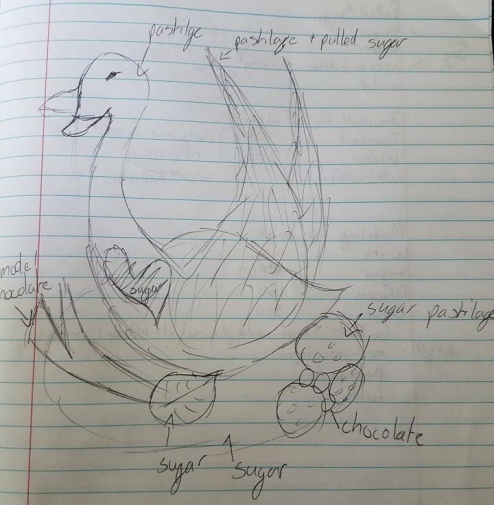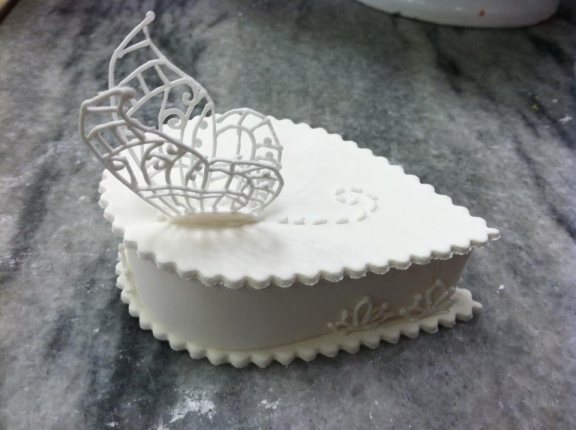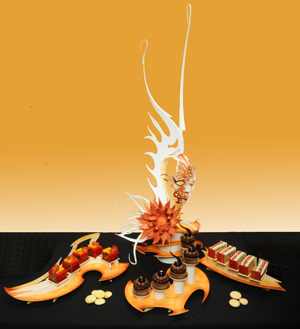With the end of the semester at SNHU comes the end of my Advanced Pastry course. For the end, we were asked to create showpieces that were at least 8 inches tall, wider at the bottom than the top, and that included chocolate, sugar, and pastillage.
For my showpiece, I wanted to focus on a classic design, the swan. Normally, I come up with ideas for art based on pop culture, so this design was meant to challenge myself and show creativity within the classics. The main body of the swan was created with pastillage to give the stark white color and structural support. Then, there are pulled sugar feathers and water lily petals. The base is made from casting sugar, and the chocolate can be found in the form of a modeling chocolate stick and chocolate bonbon rocks. Below is my rough sketch for the design.

Course Overview
This course was a great way to practice decoration techniques within a learning setting. Some of the mediums we used, like pastillage and blown sugar, are hard to find in the industry, so the lab provides all the equipment needed without extra expense to students. If anyone is interested in sugar art, I recommend looking for classes at near by establishments. Classes involve less investment then buying all the equipment only to not enjoy sugar art.
I would have to say that my favorite medium was the sugar. While sugar can be hot to handle, it does not require quite as much attention or precision as chocolate or pastillage. Sugar, however, is incredibly fragile, and so it is best to make extras of every piece. I would definitely be interested in making sugar decorations for cakes later in life, nonetheless.
After sugar would have to come pastillage. Pastillage did not bother me much, as I am fine with working quickly under pressure, but a lot of my pieces had a texture referred to as elephant skin. This means that the surface was rough and bumpy. Since the piece was kept white, the texture was not noticeable, but it would have become clear should I have airbrushed my piece. I would need more practice to eliminate this defect in my pastillage.
Lastly is chocolate, with which I have a love hate relationship. Modeling chocolate is easy to use and incredibly versatile without being overly sugary like fondant, so I love this medium. Tempered chocolate, however, takes far more time and patience than I usually have in me. I would still love a chance to train under a chocolatier, despite my difficulties with the medium. The number of things that can go wrong in chocolate fascinates me.
The final note I would like to leave behind is that sugar work is not for the faint hearted. I personally am far to anxious to ever subject myself to making another sugar showpiece. While assembling the swan, I was incredibly frightened of shattering it all with every step, and so I was faint for the majority of the lab. However, if you have a steady hand and lack mental illnesses like anxiety, go for it.






